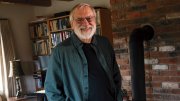For all the renewed debate about national missile defense--the "Star Wars" program, and the threat of attack by rogue nuclear states like North Korea--there is one real, irreducible strategic danger in the post-Cold War world that continues to be widely ignored: Russia's nuclear arsenal. Russia still has 7,000 active nuclear warheads armed, mounted on missiles, and capable of arriving at targets in the United States less than an hour after the decision to launch. Were a dozen or a hundred of these weapons to be triggered, millions of Americans would die instantly. Incredible, unimaginable, a Cold War anachronism--yes. But this physical reality about the world of today and tomorrow cannot be denied. As surely as during the Cold War, this superpower arsenal creates for the United States a highest-priority, enduring interest in Russia: namely, that these weapons are not used against Americans or our allies.
A considered, rational choice by the Russians to launch nuclear weapons against the United States is, of course, highly improbable, since that would be the equivalent of choosing national suicide. But other risks abound. Accidental launch, unauthorized launch, misperceptions, or unanticipated consequences that led to a launch could all result in Russian warheads destroying this country. These were the fuses President John F. Kennedy saw so vividly at the nuclear brink during the Cuban missile crisis. Current conditions in Russia greatly magnify risks of accidental launch. That country's satellite warning systems are deteriorating rapidly, as are its ground-based radar warning systems; command, control, and communications systems for deployed intercontinental ballistic missiles (ICBMs); electronic locking devices; rocket launchers--even the warheads themselves. As former U.S. Senator Sam Nunn and Brookings Institution fellow Bruce Blair (a one-time air force missile-launch officer) have argued, these developments "increase the risk that Russian commanders might receive false signals of an attack and launch their missiles on an unsuspecting United States."
Add to this picture 5,000 tactical nuclear weapons: many lacking any locking device to prevent their unauthorized use and some stored at bases where a colonel with the cooperation of two lieutenants could "privatize" a dozen warheads and transfer them to world markets to convert into cash. Remember that an additional 12,000 nuclear weapons exist in various storage facilities across Russia, many in buildings with no protection other than guards whose salaries are frequently delayed for months.
Beyond assembled weapons, there are approximately 70,000 nuclear weapons-equivalents in stockpiles of highly enriched uranium and plutonium. A softball-sized chunk of this fissile material would provide Iran or a bin Laden terrorist group with the critical ingredient from which a crude nuclear device could be assembled. There are also biological weapons, chemical weapons, and thousands of ICBMs--and a deep pool of know-how for producing missiles and other weapons. In sum: the overriding reason Russia's nuclear arsenal should matter most to American security appears vividly as one considers the danger of "loose nukes."
Terrorists or rogue states could surreptitiously deliver one or a half-dozen nuclear weapons to attack American troops abroad or cities at home. One backpack-sized nuclear weapon in that van parked outside the Oklahoma City Federal Office Building would have caused not just the building but the city itself to disappear. One such nuclear device in the van that was used by terrorists to attack the World Trade Center would have caused Lower Manhattan to disappear. Russia could become a convenience store for weapons unless the United States takes vigorous steps to help consolidate and secure these vulnerable nuclear stockpiles. Here as elsewhere in a nonproliferation strategy, the surest defense is to stop proliferation at the source.
As the most open society in the world, this country will remain the most vulnerable to attacks, especially by weapons delivered surreptitiously--in the cargo holds of ships, in trucks and rail cars, even in express packages. In the real world of the next quarter-century, dreams of an invulnerable America are fantasy--whether Ronald Reagan's vision of a Star Wars shield that would "render nuclear weapons impotent and obsolete" or UN resolutions to "eliminate all nuclear weapons from earth." Anyone who doubts that terrorists could smuggle a nuclear warhead into New York City should note that they could always wrap it in a bale of marijuana.
In 1991, then Senator Nunn and Senator Richard Lugar initiated a modest, bipartisan, $400-million-a-year program of investment in securing Russian nuclear weapons and materials. Together with a contract for purchase of weapons-usable, highly enriched uranium extracted from dismantled Russian warheads, these "cooperative threat reduction" programs have helped motivate Russian measures in what is so far a promising effort.
To the best of American intelligence's knowledge, no nuclear weapons have yet--despite many attempts--been stolen, sold, or found outside Russia's borders. Although careful security analysts rightly worry about what we do not know, we are certain that no such weapons have been used. Conditions in Russia today, however, do not insure continued success. Repeated nonpayment of wages to guards who control weapons and weapons-usable materials, and the deterioration of all technical systems, combine with corruption and criminalization to magnify the risks of failure.
Although the Nunn-Lugar program has stimulated and facilitated Russian actions that have secured nuclear weapons and materials against theft or loss, the $400 million it provides annually amounts to less than 5 percent of Western expenditures on Russia--and less than one-quarter of 1 percent of the U.S. defense budget. As Nunn and I summarized the matter in a recent essay, despite a decade of progress, Russia's economic collapse and loss of government control have made the risks of "loose nukes" greater than when the United States began offering assistance.
The president who takes office in January, Democrat or Republican, should give the highest priority to securing Russian nuclear weapons, weapons-usable nuclear material, and other weapons of mass destruction. This should become the north star of American policy. What specific actions should this policy include?
-
Buy and remove all the nuclear-weapons material Russia is prepared to sell. In addition to the already scheduled highly enriched uranium (HEU) purchases, the U.S. government should buy all available Russian HEU, which, when blended with low-enriched uranium, becomes proliferation resistant and commercially valuable. Under the current agreement, less than half of Russia's HEU would be blended over the next 20 years. Plutonium should also be purchased, but that will require more substantial public subsidies because it has no current commercial use.
-
Remove potential bomb material from the most vulnerable sites in Russia. Caches of highly enriched uranium and plutonium, sufficient for making dozens of bombs, still can be found at many facilities across that country. As part of a renewed "buy and secure" campaign, potential bomb material should be consolidated in central, more secure, storage facilities.
-
Accelerate the blending down of highly enriched uranium. The United States should provide the capital investment and financial incentives for Russia to blend down all excess HEU in the next four years. For an investment of approximately $500 million, we could get all of the excess Russian HEU blended to nonweapons-usable forms--within Vladimir Putin's first term.
These steps represent the components of a minimalist strategy to secure Russian nuclear material. Even stronger measures are possible. Matthew Bunn, assistant director of the Kennedy School's Science, Technology, and Public Policy Program, proposes a more robust agenda for action--ranging from securing nuclear materials without regard to cost constraints, to reemploying Russian scientists and technicians--in a report entitled The Next Wave: Urgently Needed New Steps to Control Warheads and Fissile Material.
Fortunately, today we do not have Cuban missile crises that force citizens to experience existentially the fear of nuclear danger. But that, unfortunately, leads many to imagine that these weapons have somehow disappeared. Kennedy and Khrushchev might have had difficulty imagining that 38 years after their historic confrontation, the greatest threat to their countries' security would not be a calculated missile strike by an ideological foe, but instead Russia's loose nuclear weapons, materials, and know-how. Continuing debate about missile defense should remind all Americans of the continued presence and threat of nuclear weapons, and should prompt policymakers to think carefully about the greatest danger of all.





